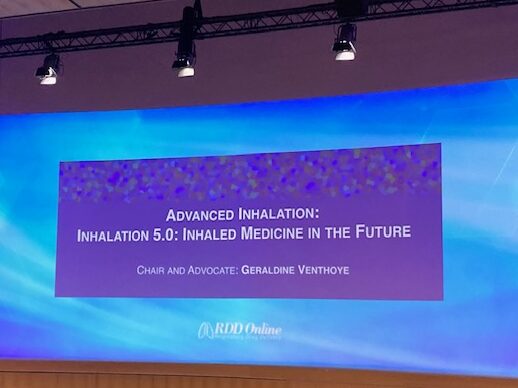A number of the panelists also discussed economic and practical considerations that must be considered alongside factors related specifically to drug development. Vozone, for example, noted that most of the current innovation that could be considered to be aligned with the vision of Inhalation 5.0 is in early stage development. Those innovations are being driven by small companies that will need substantial investment when they reach Phase 3, Vozone said while pointing out that significant regulatory uncertainty and lack of reimbursement for many aerosol products, as well as the recent political issues in the US, will make raising funds for these products challenging.
Most significant technology advances have required large investments from government over long periods of time, Murnane reminded the audience, suggesting that an environment of support for innovation and a disruption in the economic incentives is necessary. One major innovation that will need investment that he highlighted is the rise in personalized medicines such gene therapy or other biologics made specifically for a patient.
Murnane identified several challenges for development of such personalized OINDPs, including questions around delivery devices: “In one aspect, it’s cocktails of drugs that are specific to the patient. How are we going to do that when we are currently looking at one molecule per device platform?” Another challenge revolves around the idea that for personalized therapies, “manufacturing is the medicine.” “We’re not going to produce a blockbuster RNA product that’s going to be one-size-fits-absolutely-everybody out there, so we need a manufacturing pathway that can be validated and approved,” he said.
Focusing on formulation issues, Hastedt highlighted another upcoming challenge with development of more complex drugs like inhaled RNA, in that “more complex drugs leads to more complex excipients and formulations.” As a result of that complexity, she said that she sees a trend toward novel excipients as well as more biologics, and she agreed that many opportunities exist to repurpose injectables for inhaled delivery: “I think that pathway is wide open and we should be pushing on that door more.”
For his part, De Backer explained his view that that actually making a difference in patients’ lives will require disruption in the care delivery system. While technology innovations aligned with Inhalation 5.0 concepts are great, he agreed, he also pointed out that patients rarely benefit from the technology that is available today. “Innovation never comes from the incumbents,” he argued; “So if we as technology companies keep running after the incumbents, big hospital systems, insurance companies, you are going to get incremental innovation at best.”



